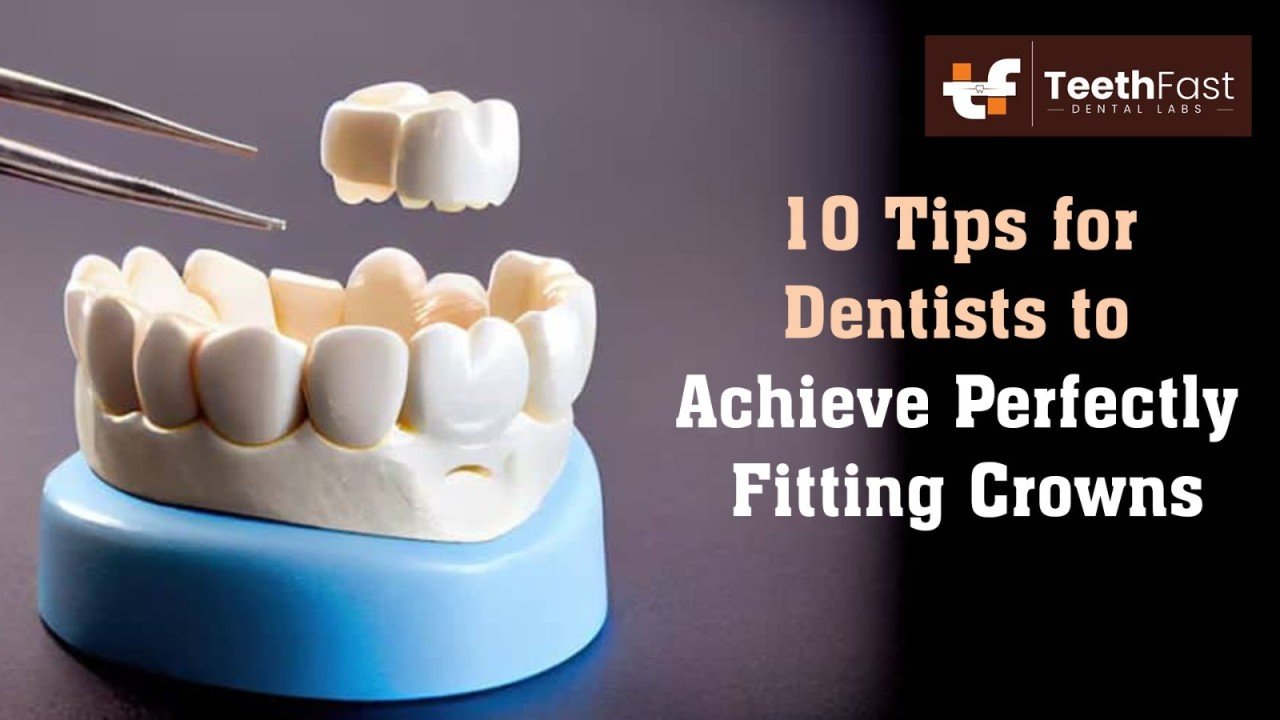In modern dentistry, the role of dental laboratories is crucial to the success of treatments that involve crowns, bridges, dentures, and other restorations. The collaboration between a dentist and a dental laboratory ensures that patients receive high-quality, functional, and aesthetically pleasing dental restorations. However, for this partnership to be effective, dentists must carefully evaluate and verify several key aspects before entrusting a dental lab with their work. This comprehensive blog explores the essential checkpoints for dentists to consider before giving work to a dental laboratory, ensuring optimal results and a smooth workflow.
1. Credentials and Accreditation
Verify the Lab’s Credentials:
- Certification: Ensure that the dental lab is certified by relevant professional bodies. In India, for example, in India License from the Central Drugs Standard Control Organization (CDSCO) is mandatory to run a dental laboratory
- Experienced Technicians: Check the qualifications and experience of the technicians. Lab technicians should have specialized training and experience in creating specific types of dental restorations.
Industry Standards Compliance:
- ISO Standards: Confirm that the lab adheres to international quality standards such as ISO 13485, which is crucial for maintaining quality management systems in medical devices, including dental restorations.
2. Technology and Equipment
Modern Technology:
- CAD/CAM Systems: Verify whether the lab uses Computer-Aided Design (CAD) and Computer-Aided Manufacturing (CAM) systems, which enhance precision and efficiency in creating dental restorations.
- 3D Printing: Check if the lab utilizes 3D printing technology for producing models and appliances, as this can improve accuracy and turnaround times.
State-of-the-Art Equipment:
- Materials: Ensure the lab uses high-quality materials such as advanced ceramics, metal alloys, and composite resins that meet the latest standards in durability and aesthetics.
- Maintenance: Inquire about the maintenance and calibration of equipment to ensure consistent and reliable results.
3. Communication and Collaboration
Clear Communication Channels:
- Direct Communication: Establish clear lines of communication with the lab to discuss specific requirements, expectations, and any modifications needed during the process.
- Feedback Mechanism: Ensure the lab has a process for receiving and implementing feedback, allowing for adjustments and improvements based on your observations.
Collaboration Protocols:
- Documentation: Confirm that the lab follows strict documentation protocols for each case, including detailed records of patient specifications, materials used, and production processes.
- Turnaround Time: Discuss and agree upon reasonable turnaround times for different types of restorations, ensuring that the lab can meet your scheduling needs.
4. Quality Control
Inspection and Testing:
- Internal Quality Checks: Verify that the lab has robust internal quality control procedures in place, including inspection and testing of finished products before delivery.
- Sample Work: Request sample work or case studies to review the lab’s craftsmanship and attention to detail.
Consistency and Reliability:
- Track Record: Assess the lab’s track record for delivering consistent, high-quality results. Seek feedback from other dentists or review testimonials from satisfied clients.
- Problem Resolution: Ensure the lab has a protocol for addressing and resolving issues or defects in restorations promptly and efficiently.
5. Pricing and Payment Terms
Transparent Pricing:
- Cost Breakdown: Request a detailed cost breakdown for different types of restorations and services to understand what you are paying for and avoid hidden fees.
- Competitive Rates: Compare the lab’s pricing with industry standards to ensure it is competitive without compromising quality.
Payment Terms:
- Payment Schedule: Discuss payment terms, including any deposits, payment schedules, and accepted payment methods, to avoid misunderstandings and ensure smooth financial transactions.
6. Legal and Regulatory Compliance
Compliance with Regulations:
- Local Regulations: Ensure the lab complies with local regulations and standards for dental laboratories, including those set by the Dental Council of India (DCI) and other relevant bodies.
- Health and Safety: Verify that the lab follows proper health and safety protocols to ensure a safe working environment and adherence to hygiene standards.
Insurance and Liability:
- Insurance Coverage: Confirm that the lab has appropriate insurance coverage to protect against potential liabilities, including errors or omissions in the restoration work.
7. Customer Service and Support
Customer Service:
- Responsiveness: Evaluate the lab’s responsiveness to inquiries, requests, and concerns. Efficient and courteous customer service is crucial for maintaining a positive working relationship.
- Support Services: Check if the lab offers additional support services, such as troubleshooting or guidance on handling complex cases.
Technical Assistance:
- Technical Support: Ensure the lab provides technical support for any issues that may arise with the restorations or appliances, including guidance on adjustments and repairs.
8. Reputation and Referrals
Reputation:
- Reputation in the Industry: Research the lab’s reputation within the dental community. Positive reviews and referrals from colleagues can provide valuable insights into the lab’s reliability and quality.
- Professional Associations: Check if the lab is a member of professional associations or organizations, which can be an indicator of its commitment to industry standards and best practices.
References:
- Client Referrals: Request references from other dental professionals who have worked with the lab. Their experiences can offer a firsthand perspective on the lab’s performance and service.
Conclusion
Choosing the right dental laboratory is a critical decision for any dentist. By carefully evaluating these checkpoints—credentials and accreditation, technology and equipment, communication and collaboration, quality control, pricing and payment terms, legal and regulatory compliance, customer service and support, and reputation and referrals—dentists can ensure that they partner with a lab that meets their standards for quality, reliability, and professionalism.
A thorough vetting process not only enhances the quality of dental restorations but also fosters a productive and harmonious working relationship with the dental lab. By taking these factors into account, dentists can provide their patients with the best possible care and outcomes, ultimately contributing to the success and reputation of their practice.





